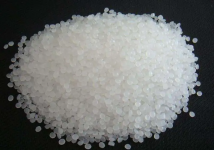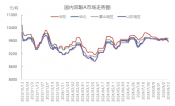read: 1262 time:2025-05-27 12:10:28 from:化易天下
High-Performance Liquid Chromatography (HPLC) is an essential analytical technique in various industries, including pharmaceuticals, biotechnology, and environmental sciences. Among the many solvents used in HPLC, acetone holds a unique position, particularly in the calibration of the system. Understanding why acetone is used for HPLC calibration is crucial for professionals aiming to achieve accurate and reliable results. This article delves into the reasons behind the use of acetone, focusing on its key properties and advantages in the calibration process.
One of the primary reasons why acetone is used for HPLC calibration is its favorable chromatographic properties. Acetone has a high volatility and low viscosity, which makes it an ideal solvent for rapid and efficient elution of compounds during HPLC analysis. Its polarity is moderate, allowing it to dissolve a wide range of organic substances, which is essential when calibrating an HPLC system that needs to accommodate various analytes.
Another critical aspect why acetone is used for HPLC calibration is its strong UV absorbance. Acetone absorbs UV light at a wavelength of 265 nm, making it easily detectable by the UV detectors commonly used in HPLC systems. This strong absorbance ensures that acetone can be easily identified and quantified during the calibration process, which is essential for establishing the system's accuracy and sensitivity. Moreover, acetone’s UV transparency across a broad range of wavelengths helps in maintaining the baseline stability of the HPLC system.
In addition to its role in calibration, acetone is also used as a mobile phase modifier in HPLC. This dual functionality is another reason why acetone is used for HPLC calibration. When used as a modifier, acetone helps in optimizing the resolution and separation of analytes. It can adjust the polarity of the mobile phase, thereby fine-tuning the interaction between the analytes and the stationary phase. This makes acetone an integral component in achieving accurate calibrations that mirror real analytical conditions.
Practical considerations also explain why acetone is used for HPLC calibration. Acetone is widely available, relatively inexpensive, and easy to store, making it a cost-effective choice for laboratories. Its affordability does not compromise its effectiveness, as it remains one of the most reliable solvents for calibration purposes. The economic aspect, combined with its efficiency, makes acetone a preferred solvent for many laboratories conducting routine HPLC analyses.
Lastly, safety and handling are important considerations when choosing a solvent for calibration. Acetone is less hazardous compared to other organic solvents like methanol or acetonitrile. It has a lower toxicity and is easier to dispose of, reducing the risk of harm to laboratory personnel and the environment. This safety profile contributes to its frequent use in calibration procedures, particularly in laboratories with strict safety protocols.
Understanding why acetone is used for HPLC calibration involves appreciating its combination of chemical properties, cost-effectiveness, and safety. Acetone's strong UV absorbance, versatility as a mobile phase modifier, and ease of use make it an indispensable tool in the calibration of HPLC systems. Its widespread availability and low cost further enhance its utility, ensuring that it remains a popular choice in laboratories around the world. By leveraging these properties, professionals can ensure precise, reliable, and reproducible HPLC results.

Jincheng Petrochemical's 300000 ton polypropylene plant successfully trial production, 2024 polypropylene market analysis

The ABS market remains sluggish, what is the future direction?

Market differentiation of bisphenol A intensifies: prices rise in East China, while prices generally decline in other regions

The production method and process flow of silicone acrylic lotion, and what are the common raw materials